Manchester City will confront Internazionale in the final of the UEFA Champions League.
We often hear that small details decide finals, but set-piece analysis is no longer a minor detail, and therefore, we will review the most prominent schemes and tactics of the two teams’ set pieces, knowing that Man City have scored 14 goals by set pieces in this Premier League season which was the fourth best record and have conceded only 7 goals as the second best defence after Liverpool who conceded 6 goals by set pieces whilst Inter have scored 11 goals in Serie A as the fourth best team and conceded 7 goals as the fourth best standing.
There are many types of set pieces, which include corners, throw-ins, goal kicks and kick-offs, but this tactical analysis will focus on the most important characteristics that distinguish the two teams and the strengths and weaknesses of each of them and what they will do to exploit the gaps in the other’s system or change their tactics to eliminate a flaw in their system.
Inter’s defending corners
Our analysis begins with Inter’s defensive scheme from corner kicks. As illustrated by the first image from their game against Fiorentina, they have two players in green assigned to zonal marking and one player in yellow ready for a short corner. Another player in red covers the rebound area, while the rest of the defenders are man markers. Fiorentina have only five attackers inside the penalty area, so Inter can spare one defender for counterattacks.
One of Romelu Lukaku or Edin Džeko always occupies a zonal position on the near post at the edge of the six-yard box, making it hard to challenge them in that area. A possible solution is to have one of their attackers block them from jumping, while another attacker runs into the space in front of them. The second image shows the targeted player in green, who tries to exploit the distance in front of Lukaku, while another player in yellow moves to the far post for a potential rebound from the goalkeeper.
As shown by the third image, two runners in green block Lukaku from jumping with their intended target, while the ball is headed towards goal. The player in yellow anticipates a possible clearance or save by the goalkeeper and moves behind the defender on the far post, as seen in the fourth image. He is rewarded with an easy tap-in for a goal.
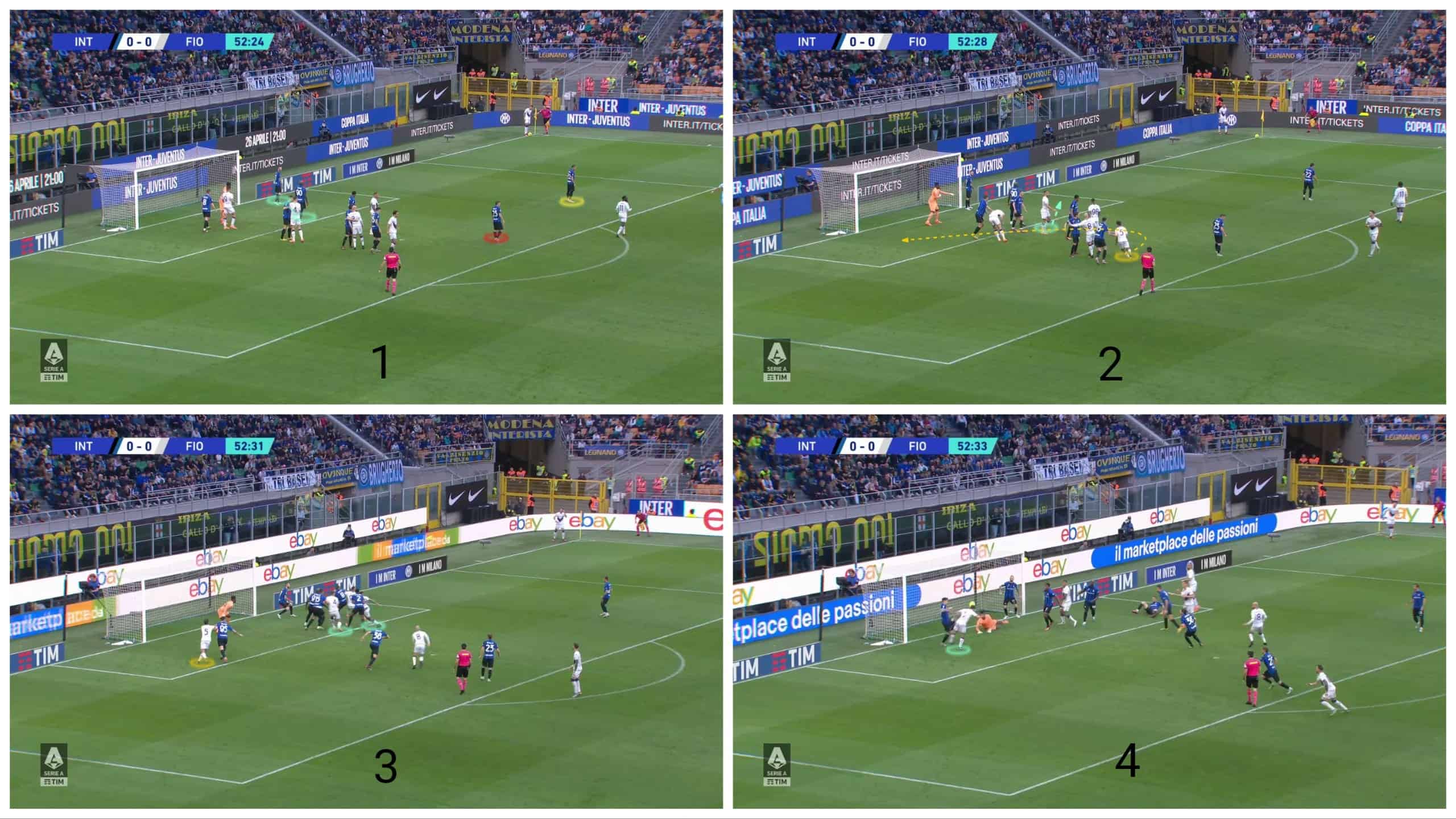
Sassuolo also employed a similar approach, but instead of shooting the ball directly toward the goal, they used a flick. The first image shows how Inter defended with the two players in green marking zonally and one player in yellow ready for a short pass. Another player in red guarded the rebound area. The targeted player of the flick started behind Lukaku, as indicated by the blue arrow, and ran in front of him.
The second image shows another player in green who blocks Lukaku from tracking the targeted player, while a third player in yellow moves to the far post to receive the flick. The third image shows that they executed their plan successfully, but the flick was too far from the red player, as seen in the fourth image.
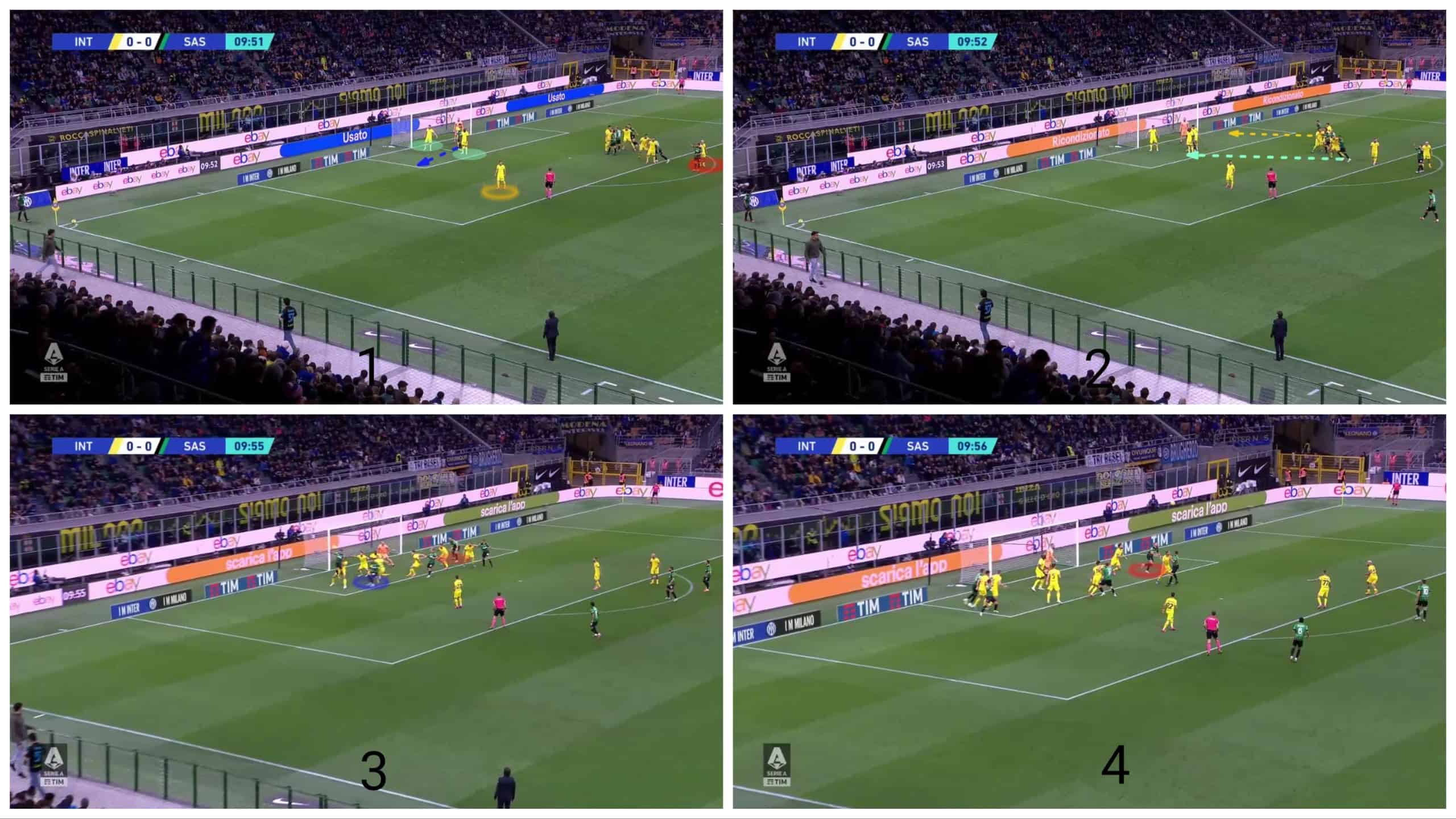
In their game against Reggina, Inter adopted the same defensive scheme, but with one of their zonal defenders in yellow slightly pushing forward for a short pass option. Reggina can set up a dismarking routine by using a stack, where four players in black lined up behind each other to confuse their markers.
Another tactic they used was to have one of their players in green run out of the penalty area, dragging an Inter defender with him and creating more space inside. The second image shows how three players split in different directions to open up a gap for their intended target in blue. The third image reveals another clever move by their target, who initially ran towards the near post, drawing Federico Dimarco with him, and then changed direction to run into the targeted space, as shown by the fourth image in green.
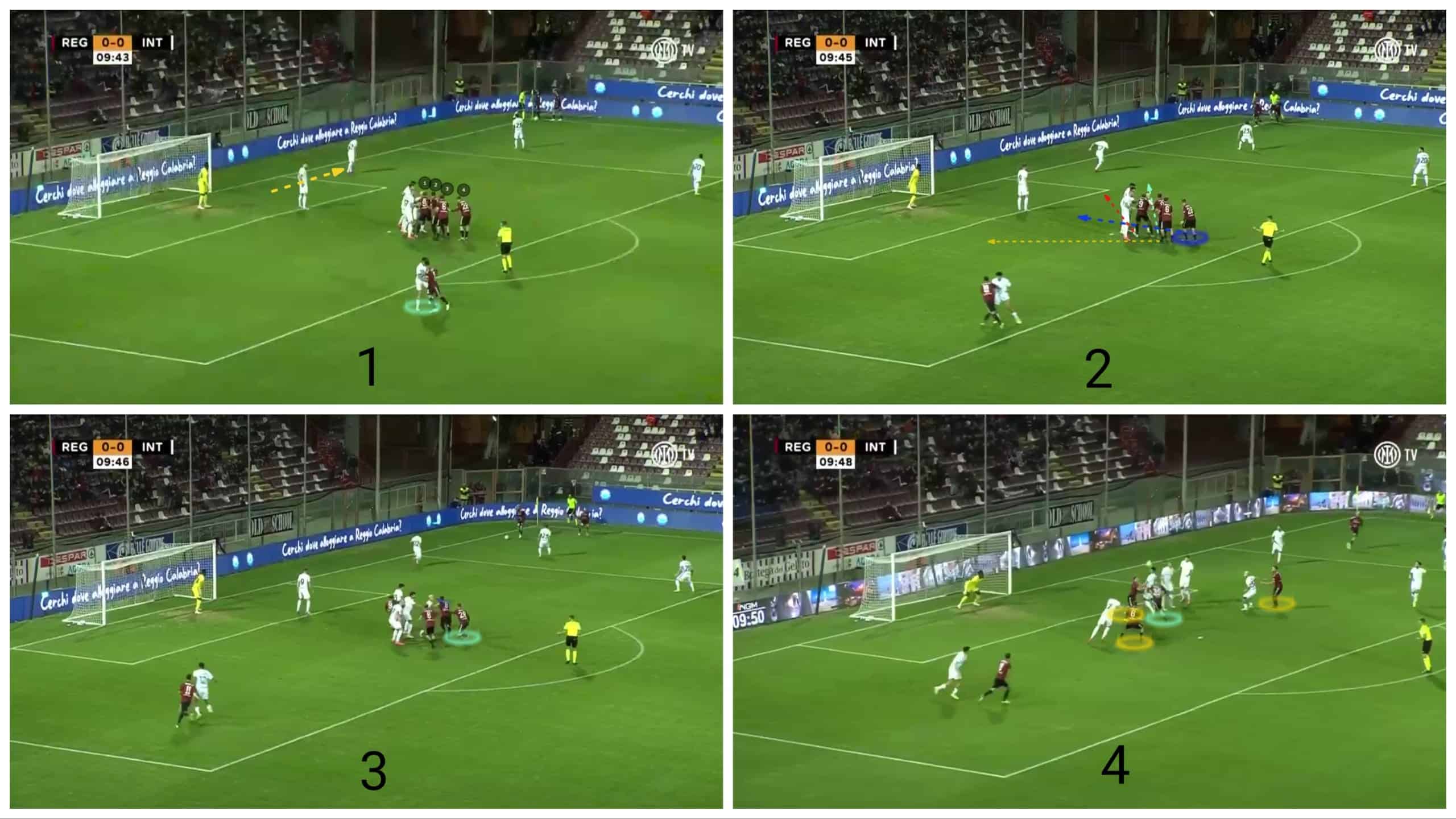
Inter faced another issue in their game against Udinese where their zonal defender in green had to deal with the short corner option and prevent a 2v1 situation. The first image shows how this gave the opponent enough time to play a short corner and then deliver a cross, as the zonal defender took a distance to face him. To address this, in the subsequent corner shown by the second image, the defender in green decided to press early, leaving his partner in red alone to zonally mark. The attacker with the yellow arrow took advantage of this by exploiting his physical superiority over his marker which we call mismatch, as seen in the third image. He scored with a header, as depicted by the fourth image.
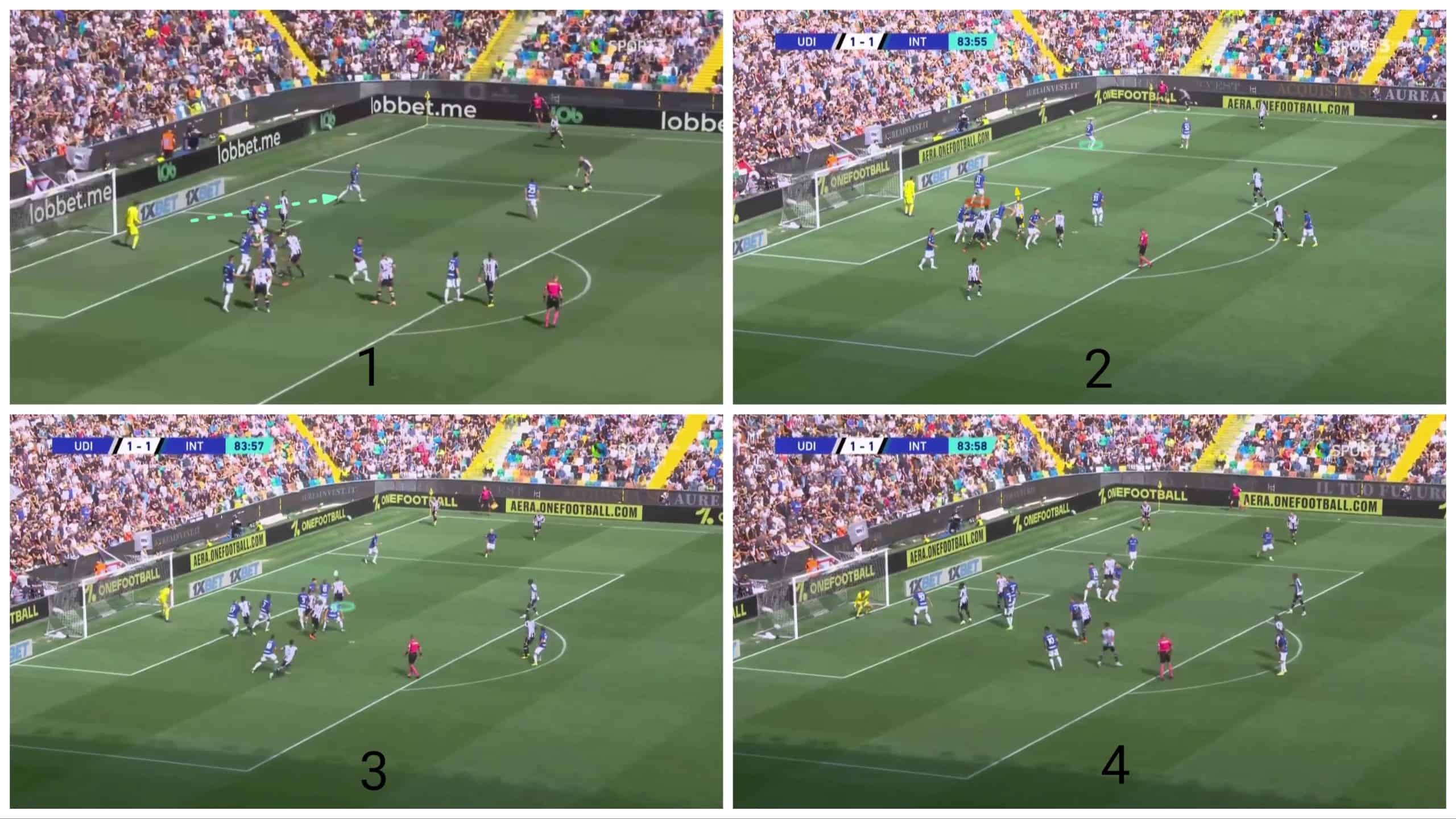
Some teams also use the short corner to create disorganisation in the defence. As shown by the first picture, when playing the short corner, two-zone defence players in green advance and their shape becomes like in the second picture which leads to clearing the space for the targeted player with the movement of the rest of the attackers in other directions, pulling their man-markers with them, creating the opportunity for a mismatch, as in the third picture, but the cross was put over the bar.
We should say that Man City prefer the routine as shown in the fourth picture. The two zonal players are highlighted in green and the man markers in red, so the targeted area was empty for Erling Haaland only against his marker and the result was a goal.
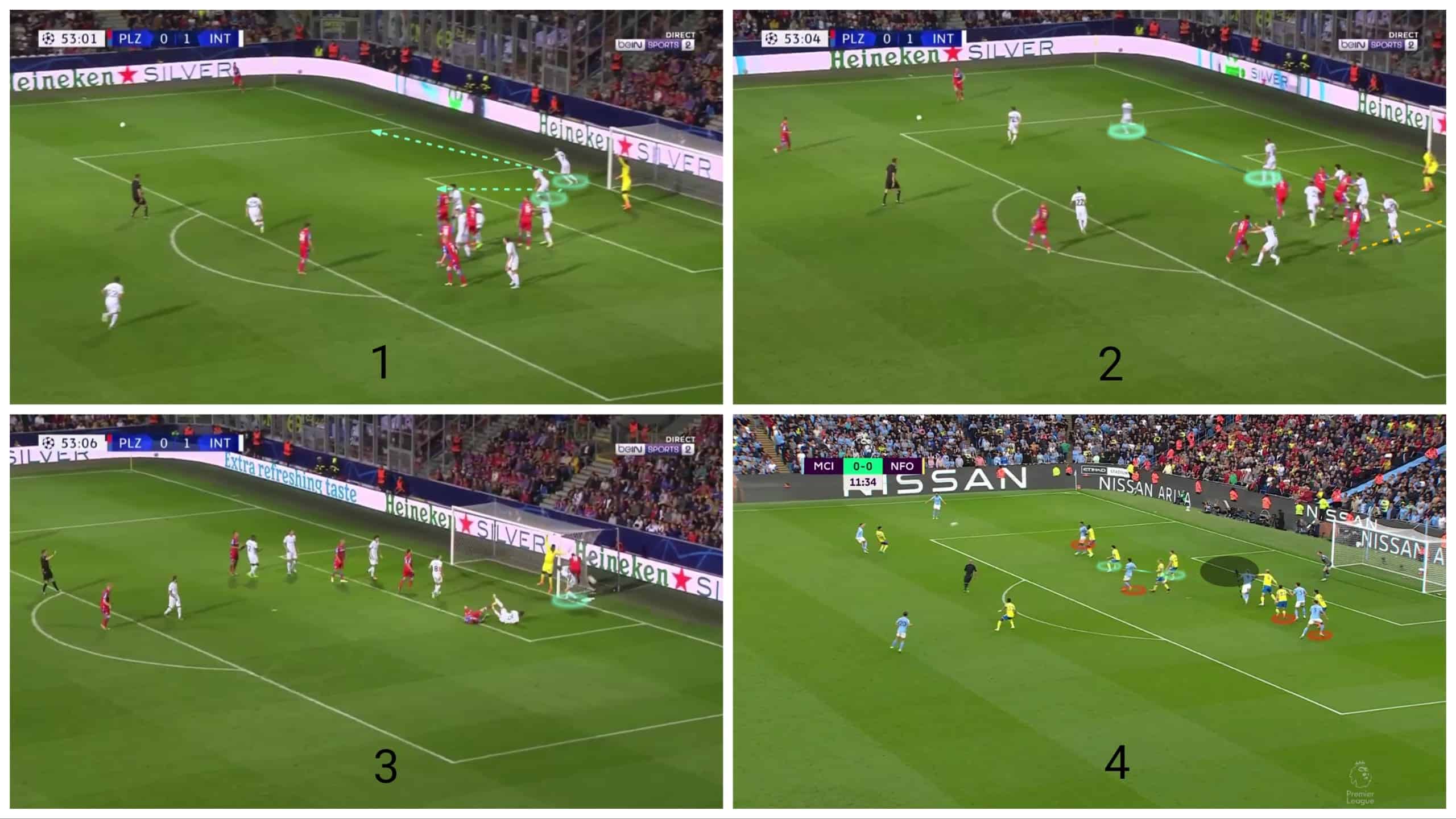
Bayern Munich used another clever tactic to exploit the difficulty of marking on out-swinging corners — a problem in orientation, where the defender cannot see both the ball and his opponent at once.
The first image shows how a Bayern player in green dragged his marker out of the penalty area, leaving the box with his opponent. The Bayern player then faked a run to the near post and switched to the far post, as shown by the second image. This caught his marker off guard as he had to turn his head and lost sight of the ball. The Bayern player managed to shake off his marker momentarily, as seen in the third image, but he missed the cross as it was too high as in the fourth image.
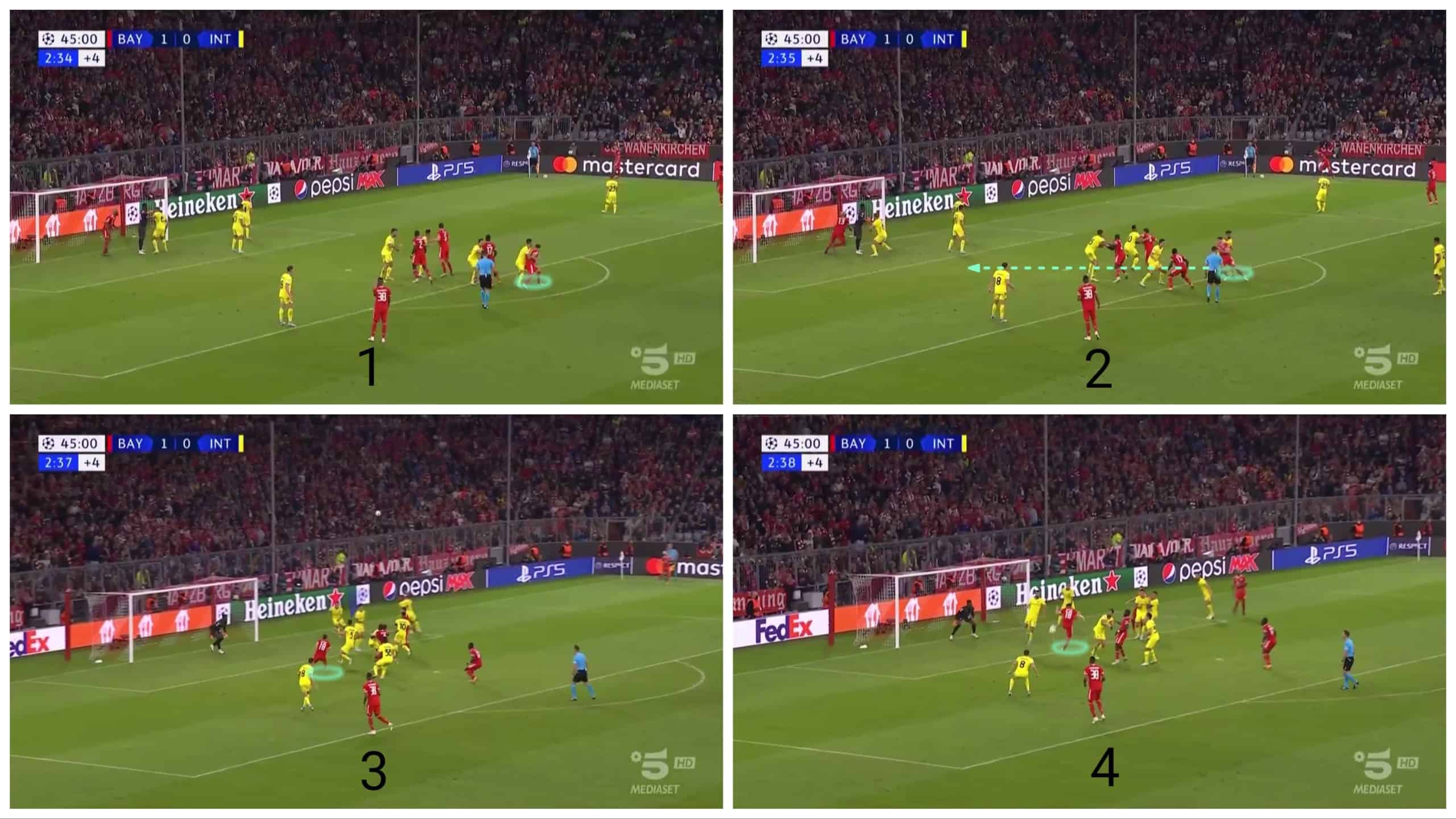
Here, it should be mentioned that Man City prefer this routine a lot against man-marking systems. The first picture shows Rodri and his marker and then he moves to the far post after playing the out-swinging corner, which then shows the problem as in the second picture. Rúben Dias and Erling Haaland show up doing a framing to the goal, waiting for a pass from Rodri in the third picture, but the defender cut out the pass as in the fourth picture.
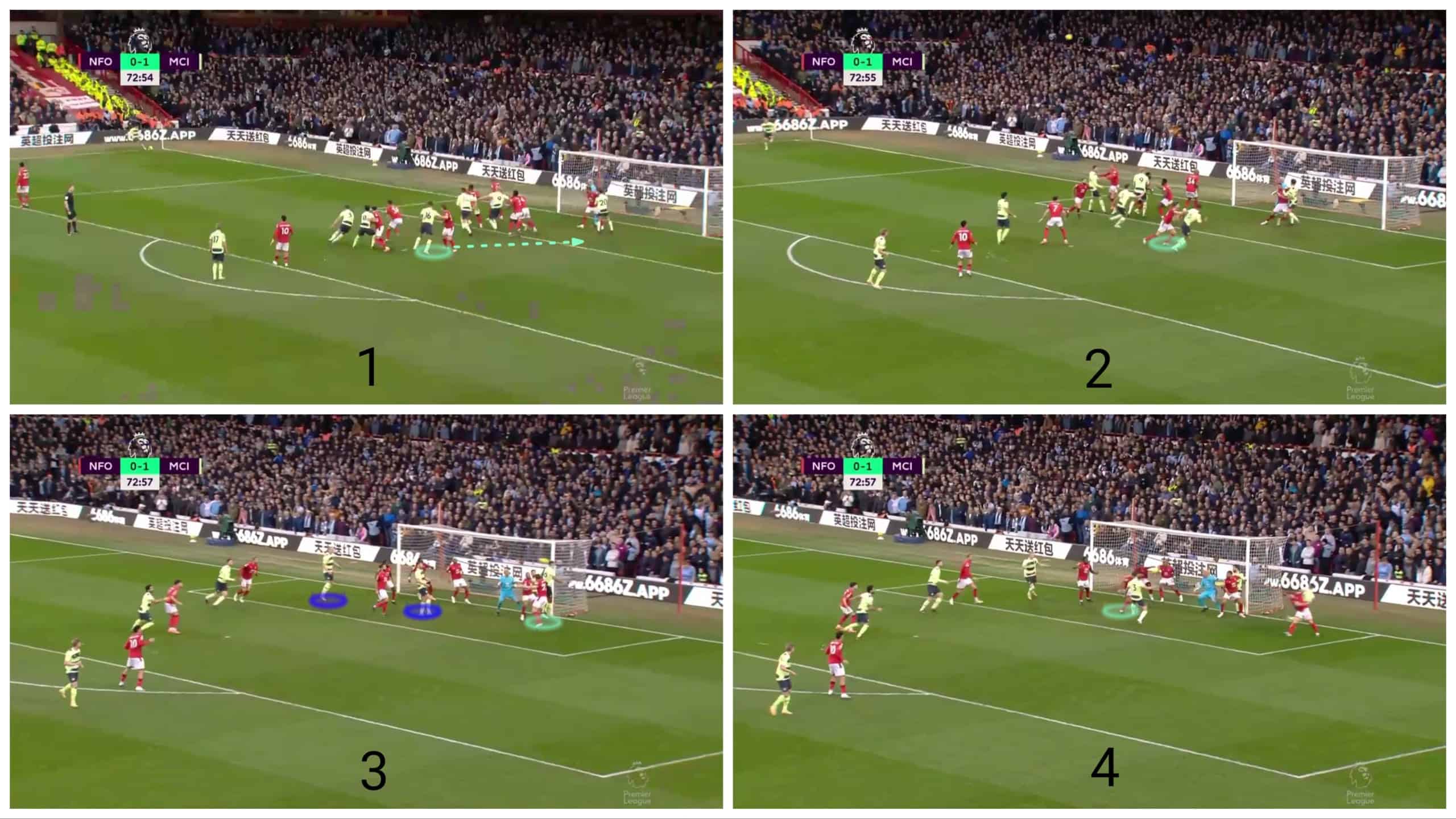
Man City’s defending corners
City defend corner kicks using this structure shown in the picture with five players in the first zonal line in green. In front of them are two players in yellow in the second-zone line. Two players act as man-markers to track two of the opponent’s runners in blue and there is also a player for the short pass option in red.
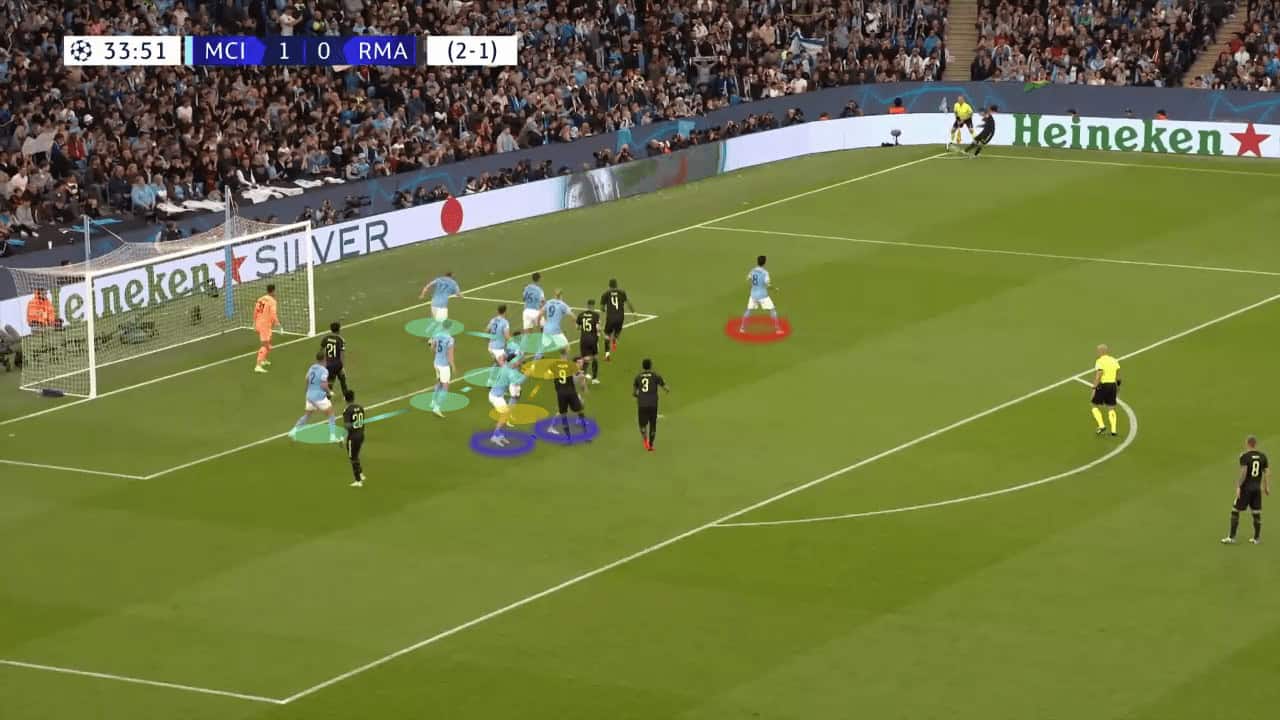
A problem appeared when the opponent decided to have more than a short-pass option, as shown in the first image, in which Man City decide to push an additional player for the short corner in blue leaving only one player in yellow in the second zone line. In the second screenshot, Brighton aim to target the area in front of Kevin De Bruyne, the first player in the zonal line, using the player in blue to flick the ball, the yellow player to block İlkay Gündoğan and the green player to block Haaland as is done in the third picture
In the fourth, the two yellow players are framing the goal, but Rodri cut out the headed pass.
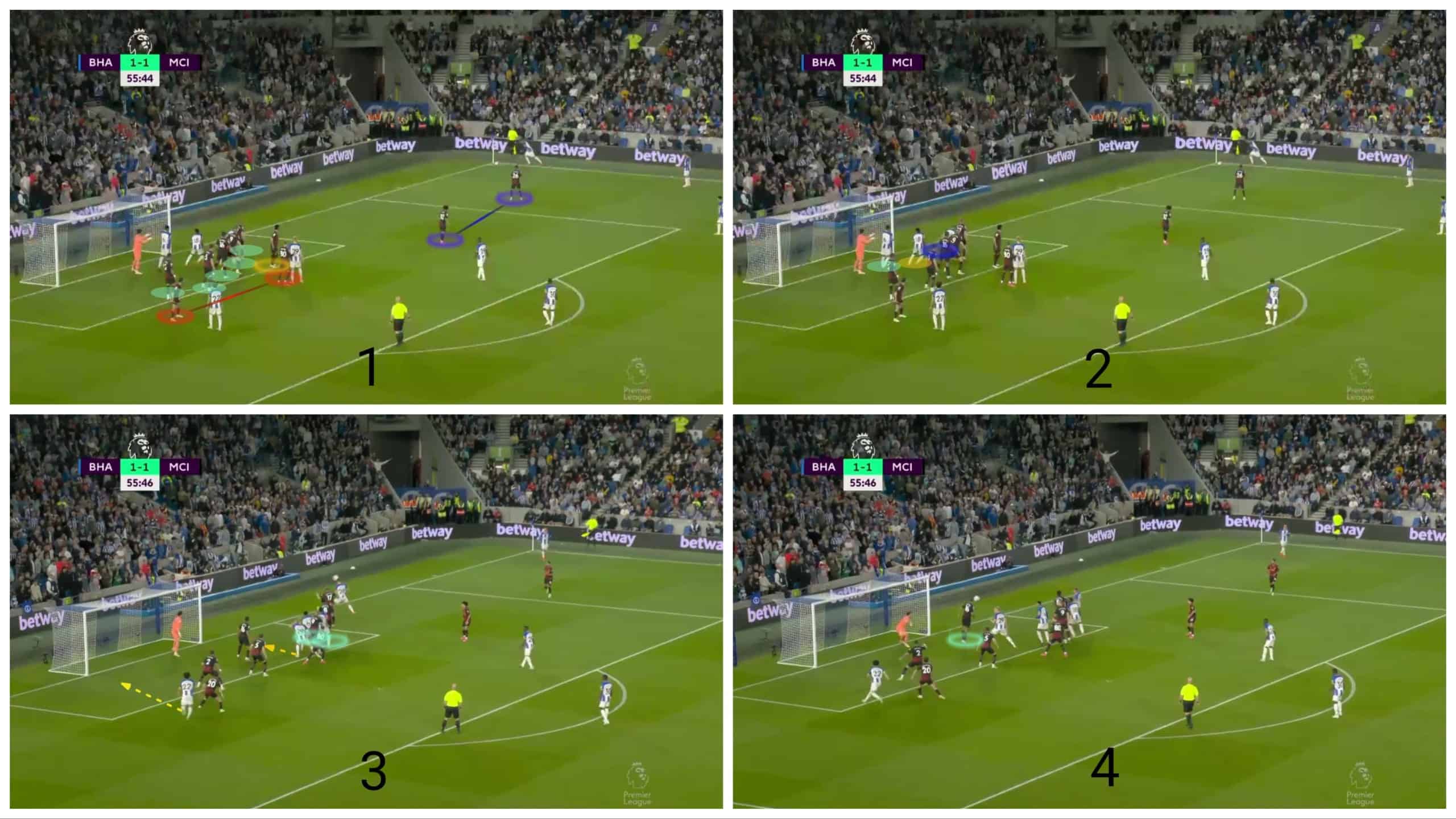
Brighton also targeted the area where Gündoğan stands as shown in the first picture in which three players from Brighton start behind the line and then moved after the taker starts moving. Two of them block Haaland and De Bruyne and the third is the targeted man who goes in front of Gündoğan, getting the ball as shown in the second image while the yellow player runs to the far post but the ball hits his hand, as in the third picture. Man City should be more careful because Inter prefer to overload this area, as shown in the fourth picture.
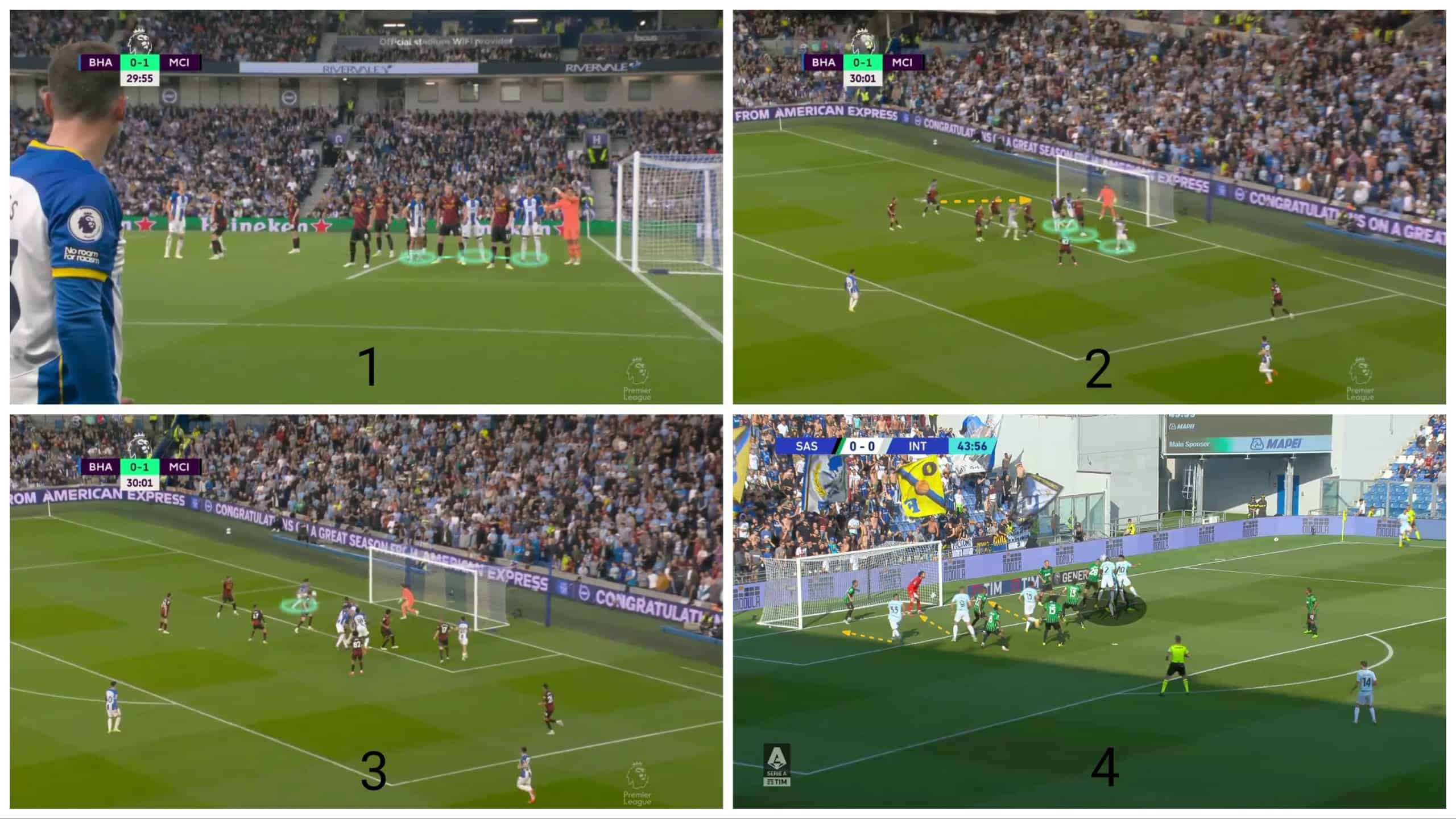
Inter’s defending free-kicks
Defensive structures of free-kicks differ in many ways from set-piece to set-piece due to the distance from the goal horizontally or vertically, but here we’ll highlight the general tactics of Inter’s defence, where they defend in a high line, but the drop is early to have a position on the attackers that is not dependant on the offside. The disadvantage in this way is that the attacker and the defender act like they are in a race, so it is a chance for mismatch, especially on the far post where the attacker has time to run far away from the goalkeeper.
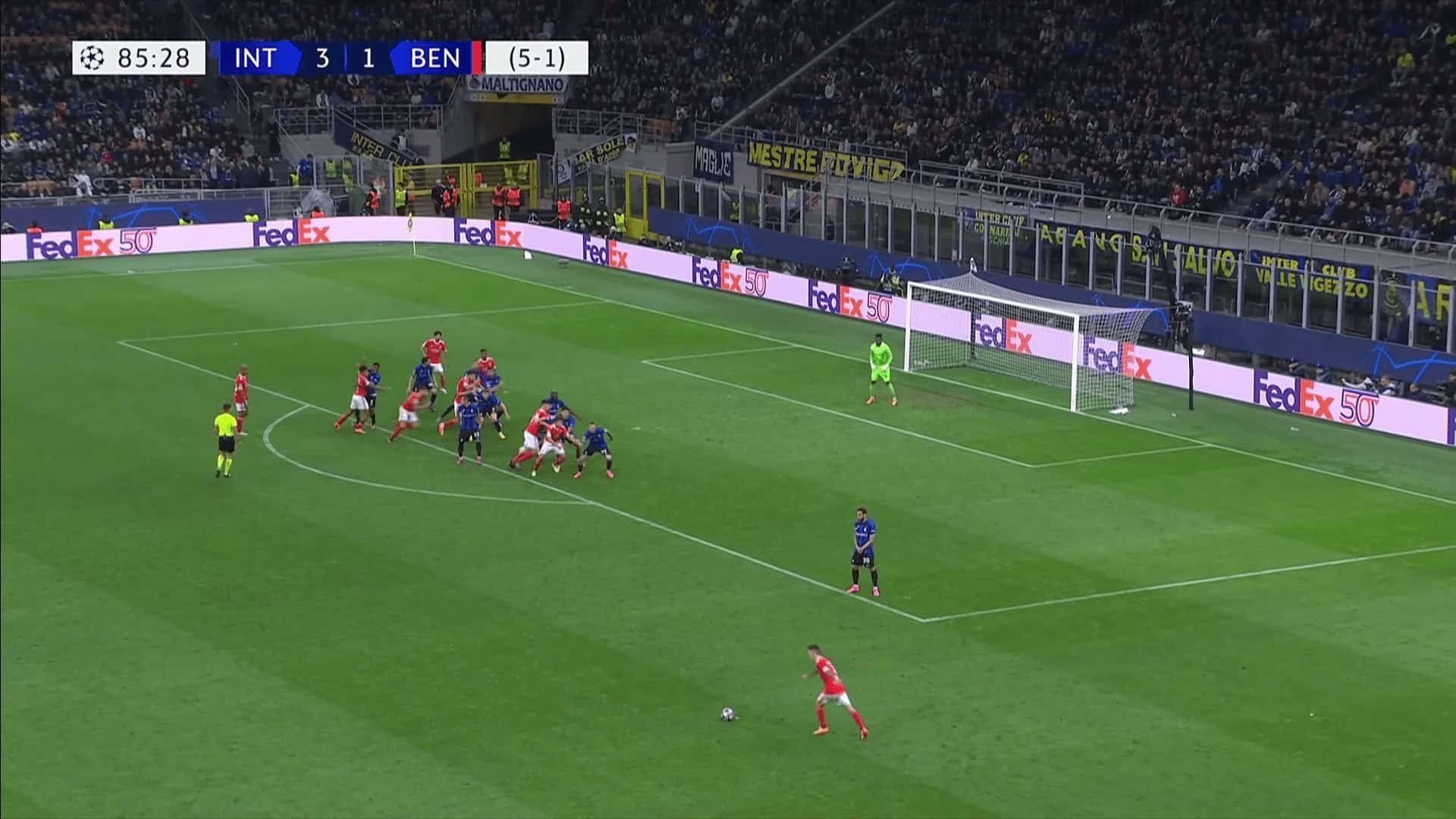
In the first picture, the opponent targets the far post with two players, one in front of the last player and a player behind him trying to drag him to empty the space for the first player, as shown in the second picture, knowing that City prefer to use this tactic like in the third and fourth pictures.
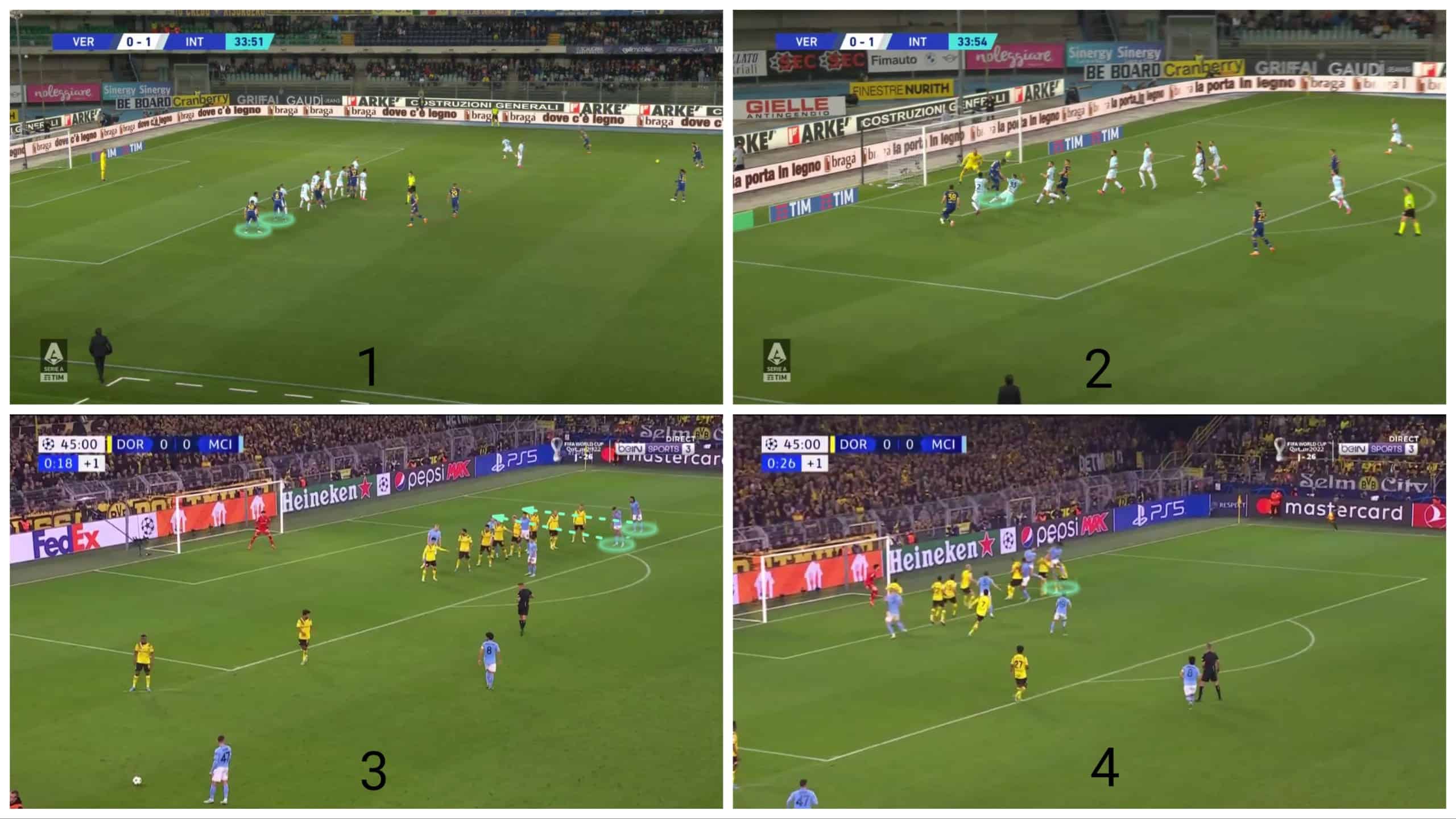
Another thing we need to know is that they’re responding to the overload, which leads to a contraction of the line, and that’s where the idea comes in, where the red player starts offside, as in the first picture, before playing the ball. The blue player blocks the first player in the line, and the idea works in the second picture, but as the last two images highlight, the shot goes wide.
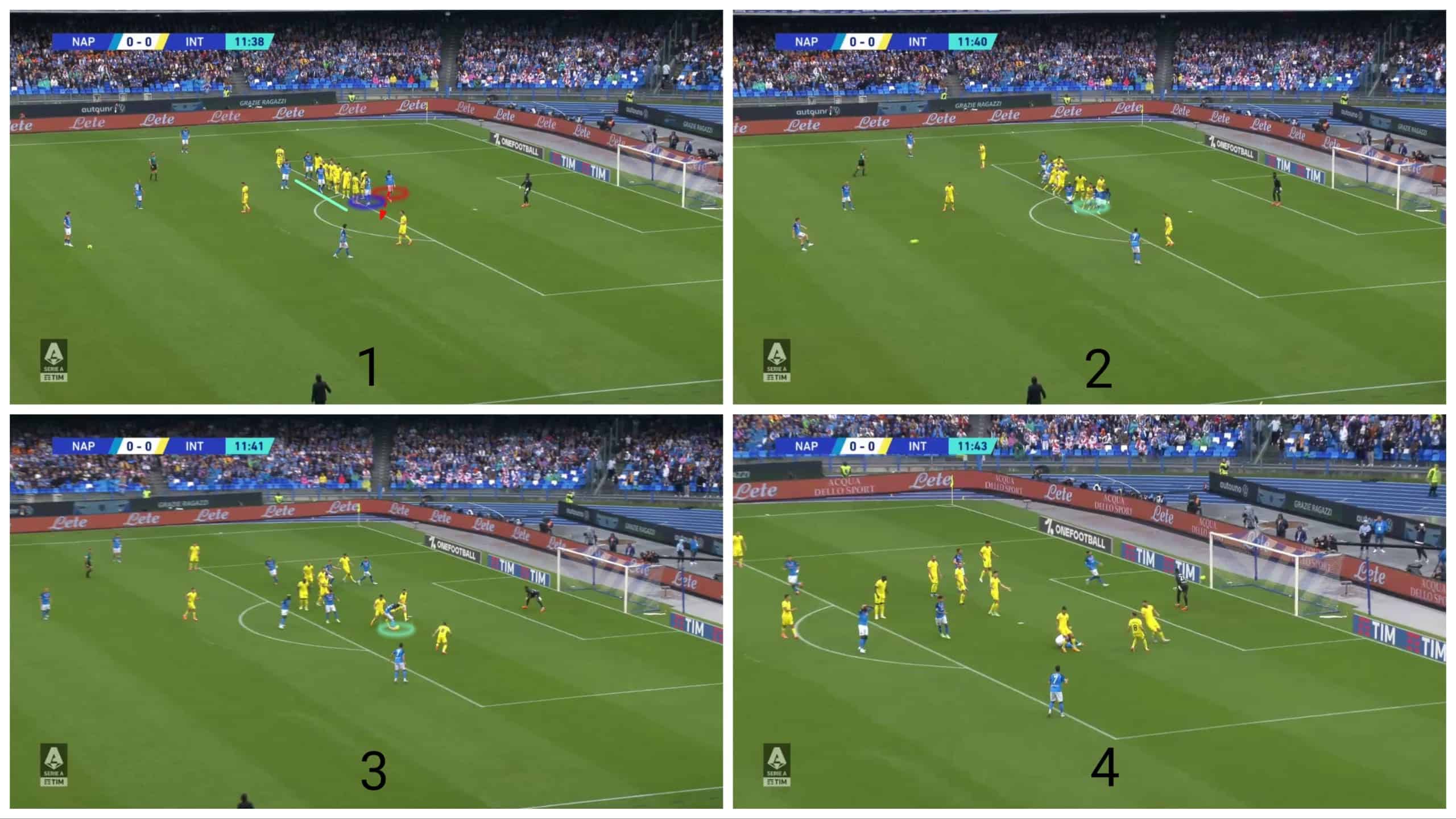
Conclusion
This analysis illustrates the advantages and disadvantages of both teams in set-pieces and that set-pieces may decide the final. Each team studies its strengths and weaknesses, trying to exploit its strengths and address its weaknesses. Therefore, it is very possible that we will see new ideas in the final or changes in the tactics of either of them to try to surprise the opponent and avoid his strengths.

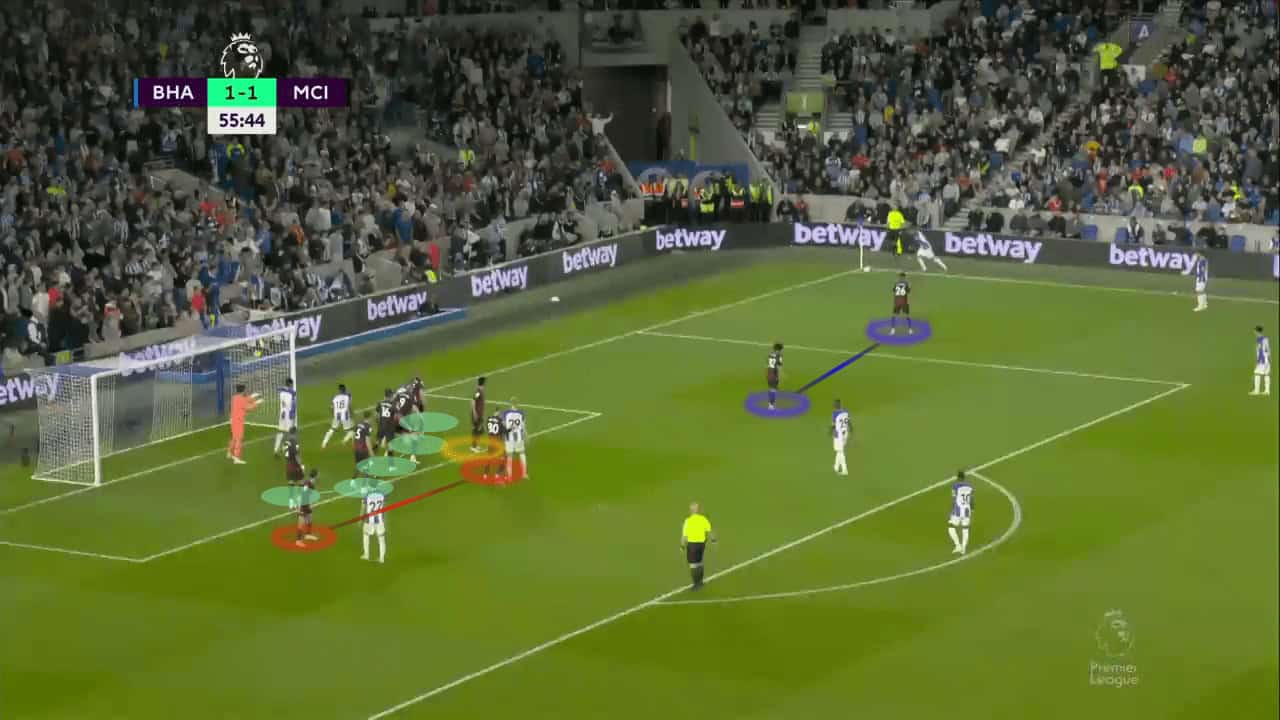




Comments